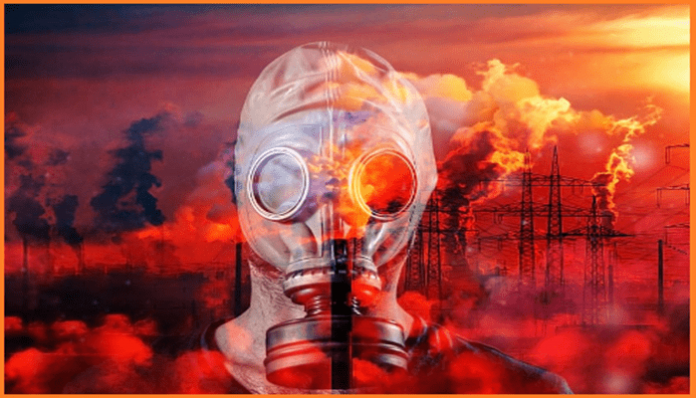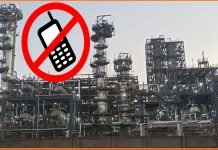Oil & Gas Refineries play a critical role in processing crude oil into various valuable products, such as gasoline, diesel, and petrochemicals. However, the refining process involves the handling of numerous hazardous substances, including gases that pose significant risks to both the environment and the health and safety of workers. This article aims to shed light on some of the most common hazardous gases found in refineries, their associated risks, methods of detection, and crucial mitigation measures.
Contents
Common Hazardous Gases in Oil & Gas Refinery
- Hydrogen Sulfide (H2S):
- Originating from crude oil and natural gas, H2S is a highly toxic and flammable gas.
- Exposure can lead to respiratory issues, eye irritation, and, in extreme cases, death.
- Rigorous monitoring and detection systems are essential to identify and mitigate H2S risks promptly.
- Methane (CH4):
- Although not as toxic as other gases, methane is highly flammable and poses explosion risks.
- Leakage prevention and detection systems are crucial to avoid catastrophic accidents.
- Ammonia (NH3):
- Used in various refining processes, ammonia can cause respiratory issues and skin irritation.
- Proper handling and ventilation are vital, along with personal protective equipment (PPE) for workers.
- Carbon Monoxide (CO):
- A byproduct of incomplete combustion, CO is odorless and colorless, making it particularly dangerous.
- Monitoring and control of combustion processes are critical to prevent CO emissions.
- Benzene (C6H6):
- Commonly found in crude oil, benzene is a carcinogenic substance.
- Stringent exposure limits and monitoring are essential to protect workers and the environment.
Risks and Dangers of Hazardous Gases
- Health Risks:
- Inhalation of hazardous gases can lead to immediate health problems, such as respiratory distress, nausea, and dizziness.
- Long-term exposure may result in chronic health issues, including cancer.
- Environmental Impact:
- Gas releases contribute to air pollution and can harm ecosystems, wildlife, and water sources.
- Stricter environmental regulations aim to limit the impact of refineries on the surrounding environment.
- Fire Hazard
Detection Methods of Hazardous Gase:
- Gas Detectors:
- Portable and fixed gas detectors are crucial tools for monitoring the concentration of hazardous gases in different areas of the refinery. These detectors can provide real-time data and trigger alarms when gas concentrations reach dangerous levels.
- Gas Chromatography:
- Gas chromatography is a laboratory technique used for analyzing the composition of gas mixtures. It is particularly useful in identifying and quantifying trace amounts of gases in complex samples.
- Infrared (IR) Sensors:
- Infrared sensors can detect specific gases based on their absorption of infrared light. This method is effective for detecting hydrocarbons and some other hazardous gases.
Safety Measures of Hazardous Gases
- Personal Protective Equipment (PPE):
- Workers must wear appropriate PPE, including respiratory protection, to minimize exposure.
- Regular training on the proper use and maintenance of PPE is essential.
- Gas Detection Systems:
- Continuous monitoring systems detect gas leaks promptly, enabling quick response and mitigation.
- Regular maintenance and calibration of detection systems are crucial for their effectiveness.
- Engineering Controls:
- Implementing engineering controls, such as proper ventilation and process design, reduces the likelihood of gas leaks.
- Regular equipment inspections and maintenance are essential for preventing malfunctions.
- Emergency Response Plans:
- Well-defined emergency response plans ensure a swift and organized reaction to gas releases.
- Regular drills and training exercises prepare workers for emergency situations.
In the oil and gas industry, the management of hazardous gases is integral to maintaining the safety of workers, protecting the environment, and preventing catastrophic accidents. Stringent regulations, continuous monitoring, and a commitment to safety culture are essential components of a comprehensive approach to mitigate the risks associated with hazardous gases in oil and gas refineries. As technology and industry practices evolve, staying abreast of the latest safety measures is crucial to ensuring the well-being of all those involved in the refining process.
Frequently Asked Questions (FAQ) about Hazardous Gases in Oil & Gas Refineries:
1. What are hazardous gases in oil and gas refineries?
Hazardous gases in refineries include hydrogen sulfide (H2S), methane (CH4), ammonia (NH3), carbon monoxide (CO), and benzene, among others. These gases pose various health risks and can be flammable or explosive.
2. Why are these gases considered hazardous?
These gases are hazardous due to their toxicity, flammability, and potential health effects. Exposure to these gases can lead to respiratory problems, skin irritation, and, in extreme cases, fatalities. Some gases, like benzene, are carcinogenic.
3. How are workers protected from hazardous gases in refineries?
Workers are protected through the use of Personal Protective Equipment (PPE) such as respiratory protection, eye protection, and proper clothing. Training programs and regular drills also ensure that workers are well-prepared to handle potential gas leaks.
4. What measures are in place to prevent gas leaks in refineries?
Gas leaks are prevented through engineering controls, including proper ventilation and process design. Regular equipment inspections, maintenance, and the use of gas detection systems contribute to early detection and prevention of leaks.
5. How is the surrounding environment safeguarded from the impact of hazardous gas releases?
Environmental protection is ensured through adherence to strict regulations, monitoring systems, and emergency response plans. Refineries must comply with emission limits, conduct regular environmental impact assessments, and implement measures to minimize their ecological footprint.
6. Are there regulations governing the management of hazardous gases in refineries?
Yes, there are stringent regulations at both national and international levels that govern the management of hazardous gases in refineries. These regulations specify permissible exposure limits, safety standards, and environmental protection measures.
7. What is the role of gas detection systems in refineries?
Gas detection systems continuously monitor the air for the presence of hazardous gases. They play a crucial role in early detection, allowing prompt responses to mitigate the risks associated with gas leaks.
8. How often should gas detection systems be calibrated?
Gas detection systems should be calibrated regularly, typically as per manufacturer recommendations or regulatory requirements. Regular calibration ensures the accuracy of the readings, providing reliable information for prompt action in case of gas leaks.
9. What is an emergency response plan, and why is it important?
An emergency response plan is a documented set of procedures outlining actions to be taken in the event of a hazardous incident, including gas releases. It is crucial for ensuring a quick, organized, and effective response to emergencies, protecting both workers and the surrounding community.




